|
 What is the meaning What is the meaning
of AV archives?
Lectures, screening, installation and performance
Web site DIVA Station
Kapelica Gallery, Kersnikova 4, Ljubljana
October 27th, 2011, 6pm till 10pm
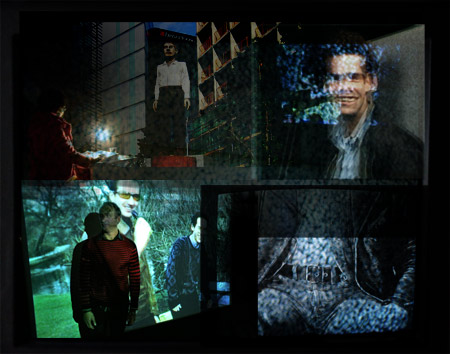
- Foreword: Celebrating World’s day of audiovisual heritage
- Programme
- Lecture: Benjamin Cook
- Screening: LUX_Presents
- Lecture: Andrej Pezelj
- Installation and performance: Dan Oki
- DIVA Station – Official launch of the web site
- Seminar Focus: What is the meaning of AV archives?
- Photo Archive
- Report
- Media Coverage
- Index
1. Foreword: Celebrating World’s day of audiovisual heritage
Creating physical and virtual, analogue and digital archives is a necessary tool to enable us a reflexion on contemporary art production. UNESCO has adopted 27 October as the World Day for Audiovisual Heritage to better focus on the meaning of audio-visual materials and their carriers (film, video and sound footages, radio and television), and to provide an incentive to protect and maintain these documents which are an essential part of cultural heritage. The intention of this year’s seven edition of the World Day of AV Heritage is also to raise cultural and political attention and promote institutional changes in the field of protection this fragile and vulnerable heritage which is subject to fast chemical decay and technological out-datedness.
We are accepting a consensus that we are not able to comprehend the development of culture and society in the 20th and 21st Century without audiovisual archives and the material that they preserve. Nevertheless, a vast majority of organisations dealing with AV archives of contemporary art face themselves with lack of support by the authorities which could assure a sustainable and professional work in this field.
SCCA, Center for Contemporary Arts – Ljubljana tries to address an overall debate about Slovenian video art and new-media practice with research, documentation, presentation, education and archive programmes to preserve movable cultural heritage. Ever since 2005 we are preparing international seminars to seek for answers concerning the field of archiving AV materials. This year we will ask ourselves about the meaning of audiovisual archives and officially launch the web page of video and media art DIVA Station (www.e-arhiv.org/diva)
2. Programme
October, 27th 2011
- At 6pm:
Benjamin Cook: LUX and moving images
Lecture
 LUX is a UK arts agency for the support and promotion of artists working with the moving image. Founded in 2002 it builds on a lineage of its predecessor organisations The London Filmmakers Co-operative, London Video Arts and The LUX Centre, and represents a history stretching back to the 1960s. LUX is the only organisation of its kind in the UK; it represents the country’s only significant collection of artists’ film and video and is the largest distributor of such work in Europe with over 6000 works stretching from the 1920s to the present day. LUX Director Benjamin Cook will present an illustrated lecture on the history of the organisation and its part in the changing place of artists’ moving image practice in the UK over the past 50 years. LUX is a UK arts agency for the support and promotion of artists working with the moving image. Founded in 2002 it builds on a lineage of its predecessor organisations The London Filmmakers Co-operative, London Video Arts and The LUX Centre, and represents a history stretching back to the 1960s. LUX is the only organisation of its kind in the UK; it represents the country’s only significant collection of artists’ film and video and is the largest distributor of such work in Europe with over 6000 works stretching from the 1920s to the present day. LUX Director Benjamin Cook will present an illustrated lecture on the history of the organisation and its part in the changing place of artists’ moving image practice in the UK over the past 50 years.
 Benjamin Cook is founder director of LUX Centre for Film Video and Digital Arts since 2002. Prior he was head of distribution from 1999 till 2000 at the same institution. From 1997 till 1999 he was a festival director of London Pan – Asian Film Festival and distribution manager at London Electronic Arts. He worked as a film and video archivist at Northern Film Archive in 1993 and 1994 and in the following years obtained MA of Film Archiving at the University of East Anglia in Norwich. Benjamin Cook is founder director of LUX Centre for Film Video and Digital Arts since 2002. Prior he was head of distribution from 1999 till 2000 at the same institution. From 1997 till 1999 he was a festival director of London Pan – Asian Film Festival and distribution manager at London Electronic Arts. He worked as a film and video archivist at Northern Film Archive in 1993 and 1994 and in the following years obtained MA of Film Archiving at the University of East Anglia in Norwich.
LUX_presents
Screening
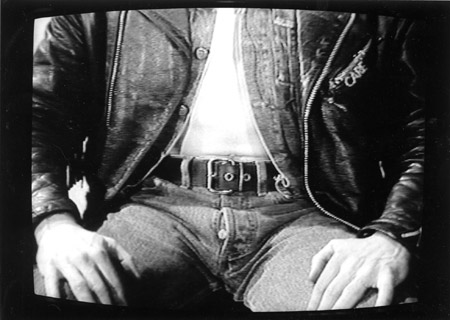
Pedagogue, Stuart Marshall (1988, 11 min)
A selection of British video art works including two works from each decade illustrating something about the development of the medium the first dating back from 1976. It is impossible to really represent the history of the development of artists’ working with video in the UK since they first got their hands on cameras at the end of the 1960s. This selection of works drawn from the LUX collection includes two works from each decade, which while not representative of all practice in that period at least suggest something in relation to the prevalent artistic trends as well as the social and political moment in which they were made.
- This is a Television Receiver, David Hall (1976, 8 min)
- Vanitas, Tamara Krikorian (1977, 8 min)
- Blue Monday / War Machine, Duvet Brothers (1984, 10 min)
- Pedagogue, Stuart Marshall (1988, 11 min)
- Kim Wilde Audition Tapes, Cerith Wyn Evans (1996, UK, 5 min)
- Hymn, Mark Wallinger (1997, UK, 1 min)
- The March of the Big White Barbarians, Mark Leckey (2005, UK, 5 min)
- It, Heat, Hit, Laure Prouvost (2010, UK, 6 min)
- At 7:30pm:
Andrej Pezelj: Archive Before the Archive
Lecture
When one speaks about Foucault’s archive, one thinks of a specific system of interaction between statements that have their own logic of accumulation, preservation and distribution – the logic that is to a large extent connected with power. A discursive archive is of course even more important than physical archive, for it not only defines what will stay preserved from the entire production and be available to the future generations, it does not only define the strategies of the usage of preserved human production. The discursive archive on the other hand operates even before the production itself begins. While the physical archive defines the fate of what was made, the discursive archive to a large extent defines what is being made. The intention of the lecture is to show artistic practice as a consequence of relatively narrow possibilities to make statements that are given by the artistic discursive archive in specific environment and period in time.
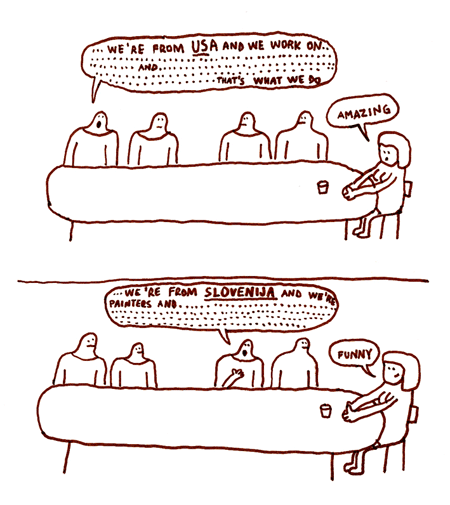
Drawing: Beli sladoled
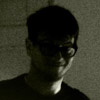 Andrej Pezelj (1978) born in Rijeka, Croatia. After Eugen Kumičić highschool in Opatia, Croatia enroled to Faculty of Natural Sciences and Engeneering in Ljubljana. Two years after he started his studies at Academy of Fine Arts, Ljubljana and graduated in 2003. At the time of his studies he visited National college of Art and Design in Dublin as Erasmus programme exchange student. In 2004 he moved to Pariz and graduated at University Paris VIII. For some time he was a part of technical team at Laurent Godin Gallery, Paris. In 2009 he had returned to Ljubljana and enroled PhD studies at Faculty of Arts, Sociology of Culture Department with mentor Rastko Močnik. Currently, he works at SCCA-Ljubljana (DIVA Station) and writes for cultural editorial at Radio Student. Andrej Pezelj (1978) born in Rijeka, Croatia. After Eugen Kumičić highschool in Opatia, Croatia enroled to Faculty of Natural Sciences and Engeneering in Ljubljana. Two years after he started his studies at Academy of Fine Arts, Ljubljana and graduated in 2003. At the time of his studies he visited National college of Art and Design in Dublin as Erasmus programme exchange student. In 2004 he moved to Pariz and graduated at University Paris VIII. For some time he was a part of technical team at Laurent Godin Gallery, Paris. In 2009 he had returned to Ljubljana and enroled PhD studies at Faculty of Arts, Sociology of Culture Department with mentor Rastko Močnik. Currently, he works at SCCA-Ljubljana (DIVA Station) and writes for cultural editorial at Radio Student.
- At 20:30pm:
Dan Oki: The Last Super8 mm Film
Installation and performance
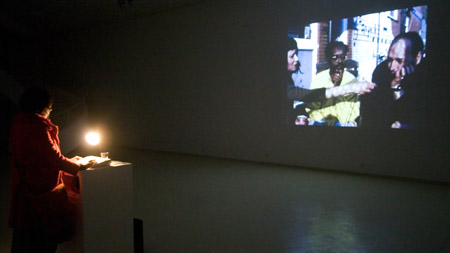
The works of internationally renowned artist Dan Oki are telling us how film and video are a data base with their own narration, personal viewpoints and social impact. With his work he experiments with combining various means of expression and tools that he equally presents in the gallery spaces as well as in the cinema theatre.
The Last Super8 mm Film is telling us that digitation and systematisation of personal archives causes re-evaluation of one's own life and oeuvre what may prove to be very welcoming for further development of one's practice. The work speaks about the obsolescence of technologi and media, for the artist had constructed it after his Super8 mm camera has expired. He had used the camera for over 25 years and it made him think of the future of media and preservation from a very personal view of the material. In the context of media art he had re-evaluated the materia through re-medialisation of his older experimantal short films. While some of the works were immediately conceived as films, most of them originally belonged to private recordings.
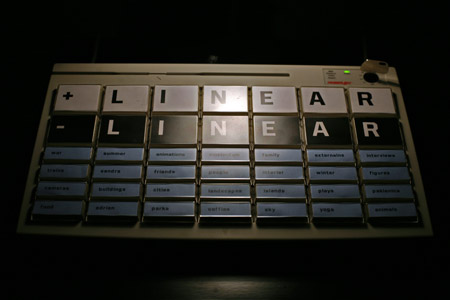
The artist performs a sort of »re-archiving« of one's own artistic practice by playing with cinematic data base. He offers the public an organised data base with selected keywors and corresponding film takes. He combines i.e. folksonomy with a contemporary system of taging to make an interesting interaction between the public and the moving images.
 Dan Oki was born in Zadar, Croatia in 1965. He lives and works in Amsterdam and Split. Between 1986 and 1990, he realized his first exhibitions and experimental films. Oki studied in the audiovisual department at De Vrije Academie in Den Haag from 1991 to 1993. In 1996, he received a master's degree in media arts from the Hogeschool voor de Kunsten in Arnhem. From 1997 to 1999, he studied film directing and screenplay writing while attending postgraduate courses at the Maurits Binger Film Institute in Amsterdam. Since 1998 Oki has been teaching video and computer art at the Academy of Fine Arts in Split. He works with the mediums of film, video, installation, computer art, and performance. Oki often experiments with visual narrative and the subjectivity of the artist. With a focus on hybrid feature-length film and cinematographic database in the context of new media art, Oki's work makes the argument that cinema itself is a database. His work has been presented in many galleries, museums and cinemas, he is a part of numerous archives, among others Amsterdam based NIMk (Montevideo). Dan Oki was born in Zadar, Croatia in 1965. He lives and works in Amsterdam and Split. Between 1986 and 1990, he realized his first exhibitions and experimental films. Oki studied in the audiovisual department at De Vrije Academie in Den Haag from 1991 to 1993. In 1996, he received a master's degree in media arts from the Hogeschool voor de Kunsten in Arnhem. From 1997 to 1999, he studied film directing and screenplay writing while attending postgraduate courses at the Maurits Binger Film Institute in Amsterdam. Since 1998 Oki has been teaching video and computer art at the Academy of Fine Arts in Split. He works with the mediums of film, video, installation, computer art, and performance. Oki often experiments with visual narrative and the subjectivity of the artist. With a focus on hybrid feature-length film and cinematographic database in the context of new media art, Oki's work makes the argument that cinema itself is a database. His work has been presented in many galleries, museums and cinemas, he is a part of numerous archives, among others Amsterdam based NIMk (Montevideo).
- At 10pm:
DIVA Station - Official launch of the web site
This year’s festival will feature an official launch of DIVA Station web portal (www.e-arhiv.org/diva).
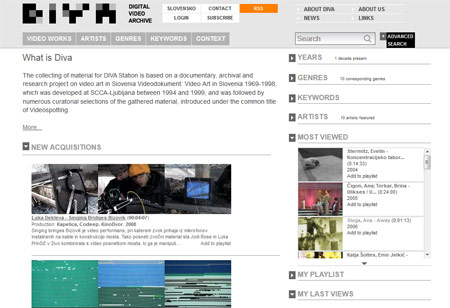
DIVA Station is a physical and web archive of video art which is being developed since 2005 at SCCA with the intent to research, document, present and archive video/media art. Collecting of material for DIVA Station is based on a documentary, archival and research project on video art in Slovenia Videodokument: Video Art in Slovenia 1969-1998, which was developed at SCCA-Ljubljana between 1994 and 1999, and was followed by numerous curatorial selections of the gathered material, introduced under the common title of Videospotting. Videodokument was the first systematic research of video art in Slovenia, and was important in framing terminology and setting theoretic basis for further research.
Web portal DIVA Station is based on a physical archive of video and media art. By now, it contains about a 1000 items of different materials. Apart from artistic works it also contains documentations, television shows about video and new media, documentation of events and individual artists. Various sources are of utter importance for research and understanding of video/media art. It contributes greatly to the possibility of interpretation of art works as well as the context in which they were produced. DIVA Station constantly adds newly acquired works to the archive and promotes an overall understanding of artistic oeuvre by organising discussions and presentations.
Materials from physical archive are available for public viewing at SCCA-Ljubljana Project Room at Metelkova 6, Ljubljana, where we also organise closed discussions with artists that are directly involved with archiving contemporary video art.
DIVA Station has already been hosted outside of its space at other institutions several times in the past few years. At Maribor Udarnik Cinema we had been presenting retrospective screenings of particular artists according to different genres and topics – predominantly video film and documentary video. The screenings were accompanied by live interviews with artists, curators and theoreticians. As mentioned above we regularly present DIVA Station in the frame of international seminars about AV archives. The most complete presentation of DIVA Station archive and work process so far was held as an exhibition project at ŠKUC Gallery in June 2009. After a successful show the archive has raised interest of several institutions for contemporary art from the neighbouring countries. They were interested in the models of organisation of materials and care for AV materials from technical and content point of view. So far, we have presented the archive at Ars Electronica Festival, Linz, Austria (2009 – as a part of GAMA); MediaScape Festival, Novigrad, Croatia (2009); Museum of Modern and Contemporary Art, Rijeka, Croatia (2009); VideoSpritz Festival, Trieste, Italy (2009); Blickmaschinen Exhibition, Kunsthalle (Műcsarnok), Budapest, Hungary (2009); City Gallery Nova Gorica, Slovenia (2010); Townhouse Gallery, Cairo, Egipt (2010); Cultural Incubator, Mariboru, Slovenia (2010); Vžigalica Gallery, Ljubljana, Slovenia (2010); Arsenal City Gallery, Poznan, Poland (2010); Ars Electronica Festival, Linz (2011 – as a part of GAMA), Trubar House of Literature, Ljubljani, Slovenia (2011); LUX, London, UK (2011).
DIVA station is a partner archive of GAMA (Gateway to Archives of Media Art) international platform that connects similar European media art archives and enables them better visibility and wider accessibility.
The official launch of the DIVA Station web portal is for contributors and workers at the archive only the end of the first step of systematisation of extensive AV materials that are now accessible on-line. The launch will have a follow-up especially in terms of adding content and technological updates. We are aware that one of the key characteristics of live archives like DIVA Station is a constant flow of information, close connection to artistic production and never ending search for more suitable technological solutions for web and physical archiving of contemporary art.
More: www.e-arhiv.org/diva
 |
3. Seminar Focus: What is the meaning of AV archives?
Jean-Luc Nancy says: “There is no meaning if meaning is not shared…” On the basis of this idea we have took in consideration the main focus if What is the meaning of AV archives? seminar. This is a political question that is connected with the acceptance of AV archives in the wider social sphere. This is not only a promotion or presentation of an individual archive, but above all raises a question whether a certain society recognises AV materials as an important part of its cultural identity and how is this reflected on a practical level. Is the society mature enough to be interested about reflexion, analysis and synthesis of its cultural products? Or is it just interested about mass production f cultural goods? In the past decade, smaller archives which are trying to reflect upon particular segments of cultural production are faced with lack of regulatory framework that would enable them to function properly.
Archives for audiovisual art have specific characteristics not just in their content, geography and fields of interest but also in the institutional framework. For a thorough and complete preservation of AV cultural heritage we would need to ensure suitable conditions for functionality of the archives on all levels, not just on the national level at the Slovene Archives, but also on the level of public institutions, non-governmental organisations and individuals. Communication between individual archives should be established in order to exchange materials, content, technological knowledge and to encourage their better visibility. Until there will be no clear strategic plan for sustainable preservation of AV archives that would enable continuous professional work and accessibility of the archives, there will be no live cultural heritage in the public sphere. It is highly contradictory that archival activities are more often than not considered as projects not as programmes not only on the national level, but also on the EU level.
SCCA, Center for Contemporary Arts – Ljubljana addresses these issues by organising regular seminars on the topic of archiving ever since 2005 in an attempt to provide better conditions for our own archive and establish a fruitful dialogue with others: What is to be done with AV archives? (2005); What is going on concerning AV archives? (2007); How to spread AV archives? (2009); How to connect AV archives? (2010). In the frame of DIVA Station archive we have already found some of the solutions for disordered personal archives of video artists working in Slovenia. We have also established close connections with several European institutions dealing with archives of media art (Montevideo, Argos, Instans Video, Heure Exquise!, Film Form, Ars Electronica, Ciant, ZKM, C3 and others). With some of them we are also connected via GAMA (Gateway to Archives of Media Art) web portal. We have also established connection with all major local institutions (Slovene Film Archives, City Museum Ljubljana, Academo of Theatre, Radio, Film and Television, Spanish Fighters Cultural Centre and others). Above all we are focused on maintaining close connections with the artists who are interested in creating personal archives. We promote some of them with Internet Portfolio project.
Creating archives, their usage, ownership, dissemination and distribution are very important topics which have not yet been sufficiently addressed in Slovenia, therefore we have set on a mission to present relevant archival models (experimental, semantic, partial) which are already existing and to promote their work and mutual connections.
4. Photo Archive

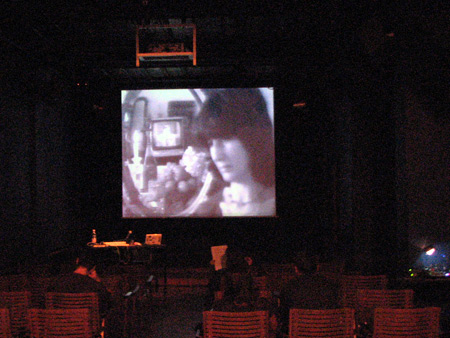
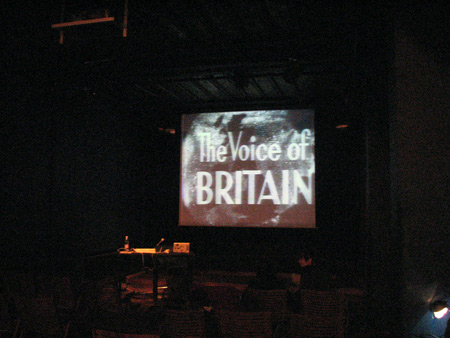
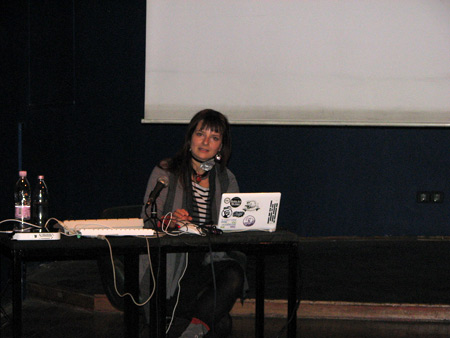
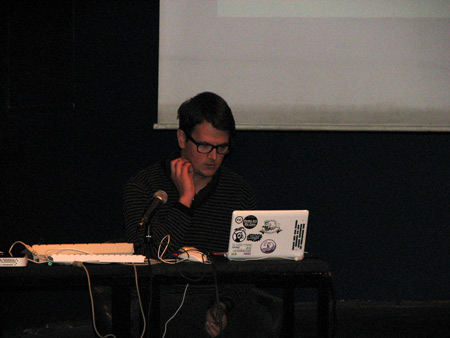
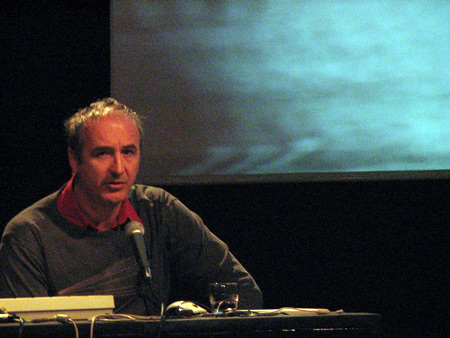
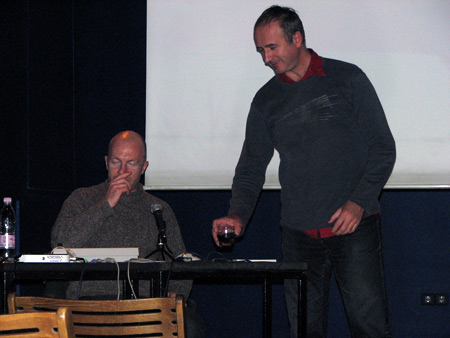
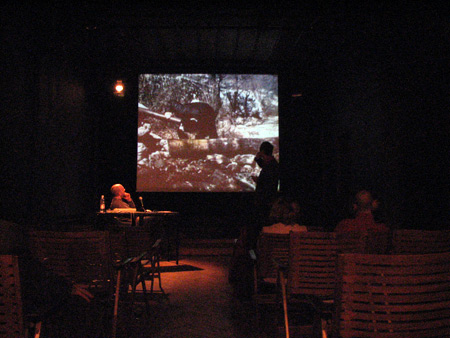
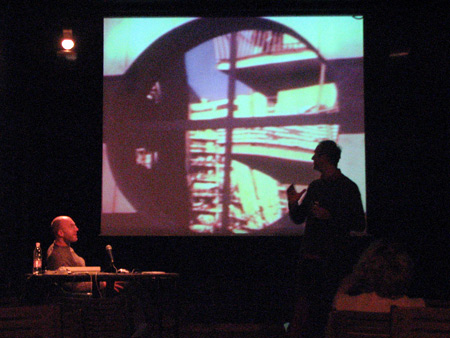
5. Report
6. Media Coverage
7. Index
Seminar Concept: Barbara Borčić, Ida Hiršenfelder
Artist: Dan Oki
Lecturers: Benjamin Cook (LUX, London), Andrej Pezelj
Web Documentation: Vesna Bukovec
Production: SCCA, Zavod za sodobno umetnost – Ljubljana
Project Supported By: Mestna občina Ljubljana, Oddelek za kulturo, Ministrstvo za kulturo RS, ERSTE Stiftung (as a part of the project A Video Turn)
Acknowledgment: Jurij Krpan and Kapelica Gallery Team (Galerija Kapelica/Zavod K6/4)
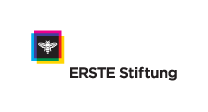
[Published October 24, 2011]
|

